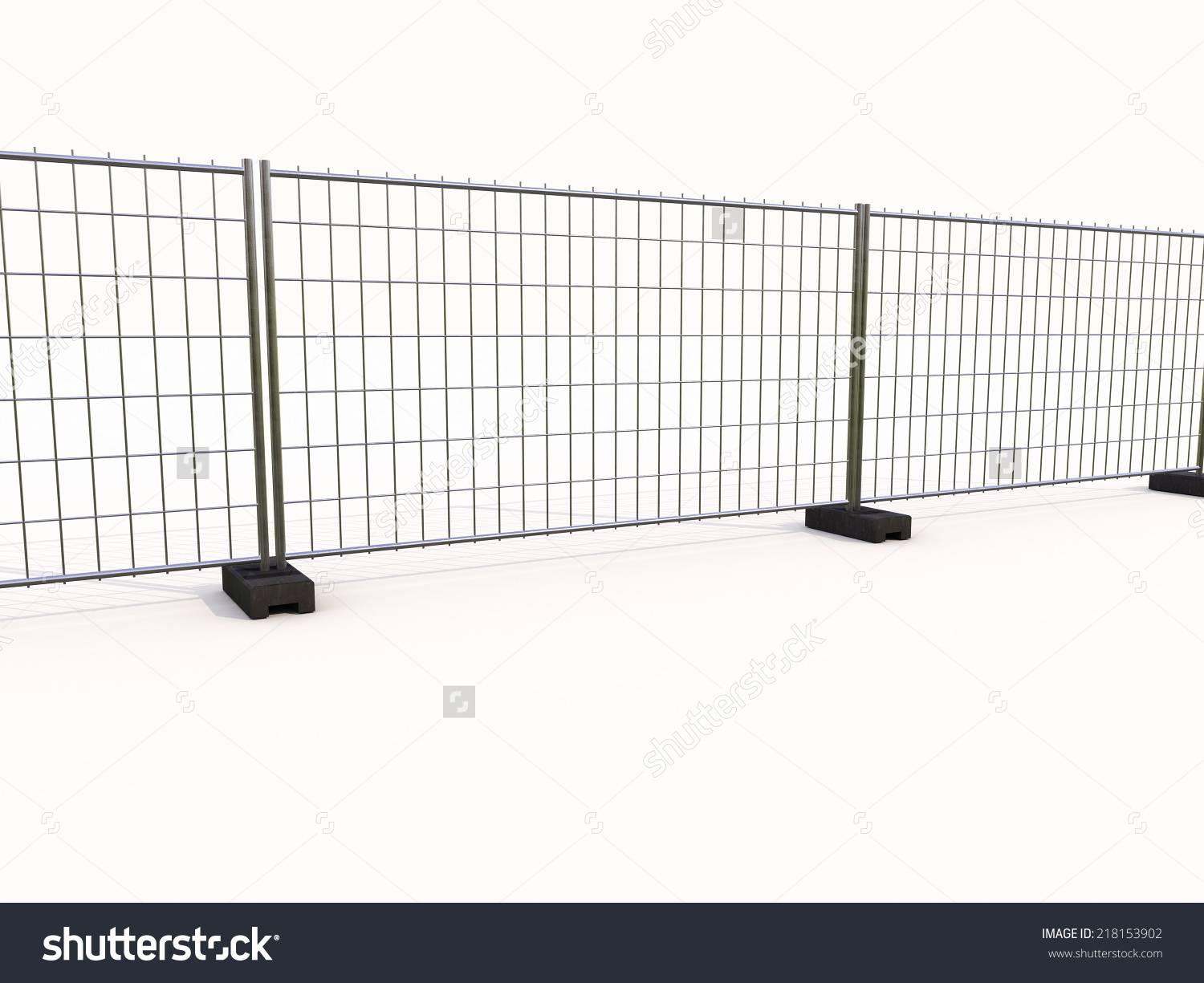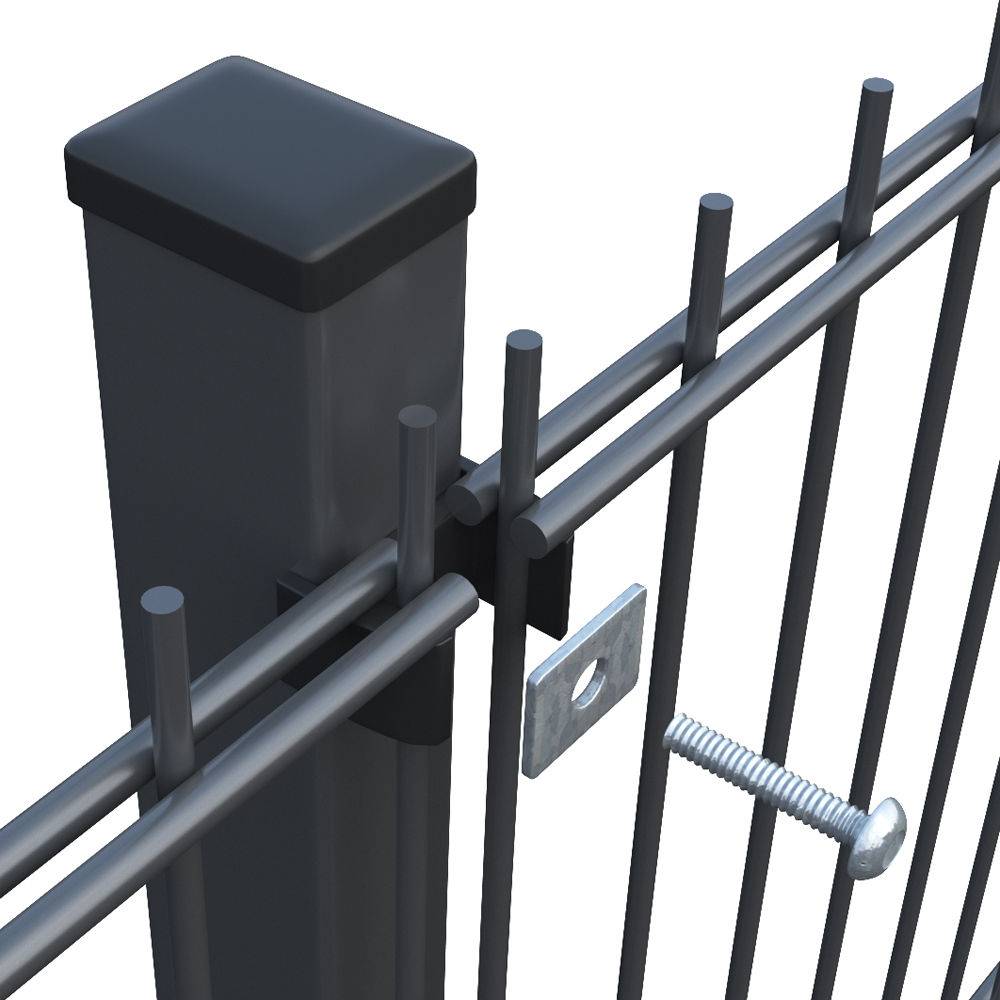

- Afrikaans
- Albanian
- Amharic
- Arabic
- Armenian
- Azerbaijani
- Basque
- Belarusian
- Bengali
- Bosnian
- Bulgarian
- Catalan
- Cebuano
- China
- China (Taiwan)
- Corsican
- Croatian
- Czech
- Danish
- Dutch
- English
- Esperanto
- Estonian
- Finnish
- French
- Frisian
- Galician
- Georgian
- German
- Greek
- Gujarati
- Haitian Creole
- hausa
- hawaiian
- Hebrew
- Hindi
- Miao
- Hungarian
- Icelandic
- igbo
- Indonesian
- irish
- Italian
- Japanese
- Javanese
- Kannada
- kazakh
- Khmer
- Rwandese
- Korean
- Kurdish
- Kyrgyz
- Lao
- Latin
- Latvian
- Lithuanian
- Luxembourgish
- Macedonian
- Malgashi
- Malay
- Malayalam
- Maltese
- Maori
- Marathi
- Mongolian
- Myanmar
- Nepali
- Norwegian
- Norwegian
- Occitan
- Pashto
- Persian
- Polish
- Portuguese
- Punjabi
- Romanian
- Russian
- Samoan
- Scottish Gaelic
- Serbian
- Sesotho
- Shona
- Sindhi
- Sinhala
- Slovak
- Slovenian
- Somali
- Spanish
- Sundanese
- Swahili
- Swedish
- Tagalog
- Tajik
- Tamil
- Tatar
- Telugu
- Thai
- Turkish
- Turkmen
- Ukrainian
- Urdu
- Uighur
- Uzbek
- Vietnamese
- Welsh
- Bantu
- Yiddish
- Yoruba

Discover Common Nail Types: Durable Fasteners for All Your Projects
Understanding the Diverse Landscape of Common Nails: A Comprehensive B2B Guide
In the vast and intricate world of construction and manufacturing, fasteners play an indispensable role, acting as the fundamental components that bind structures, products, and systems together. Among the myriad of fastening solutions available, common types of nails stand out as foundational elements, renowned for their versatility, strength, and cost-effectiveness. These seemingly simple devices are, in fact, products of sophisticated engineering and precise manufacturing processes, designed to meet rigorous demands across a spectrum of applications. From heavy-duty framing in residential and commercial construction to intricate woodworking and secure packaging solutions, the ubiquitous common nail serves as a silent, yet critical, workhorse. Understanding the nuances of their design, material science, manufacturing methodologies, and application-specific advantages is paramount for B2B decision-makers, procurement specialists, and project managers. This detailed guide aims to dissect the multifaceted aspects of common nails, offering insights into their technical specifications, the cutting-edge processes employed by leading common nails manufacturers, and strategic considerations for sourcing from reliable common nails suppliers. We delve deep into the industry trends, the evolving technological landscape, and the crucial factors that differentiate a top-tier common nails manufacturer from the rest, ensuring that your procurement decisions are informed by expertise, data, and a holistic understanding of the market. The journey through this comprehensive resource will illuminate why selecting the right common nail is not merely a transactional decision but a strategic imperative that directly impacts project integrity, longevity, and overall operational efficiency.
The market for common nails is characterized by its dynamic nature, influenced by global construction trends, raw material prices, and advancements in manufacturing technology. As key players in the supply chain, common nails manufacturers continually strive to optimize production efficiency, enhance product performance, and expand their product portfolios to cater to diverse customer needs. This competitive environment fosters innovation, leading to improvements in material compositions, coating technologies, and nail geometries that enhance holding power, corrosion resistance, and ease of installation. Procurement professionals often face the challenge of navigating a vast array of options, each promising superior attributes. Therefore, a robust understanding of industry benchmarks, quality control protocols, and the capacity for custom solutions becomes indispensable. Our exploration will touch upon the technical intricacies such as nail gauge, length, head type, shank type, and point configuration, explaining how each parameter is critical in determining the nail's suitability for specific applications. We will also address the economic implications of choosing different types of common nails, considering factors such as material cost, labor efficiency during installation, and long-term performance under various environmental conditions. Furthermore, this guide will provide a framework for evaluating potential common nails suppliers, emphasizing the importance of certifications, testing capabilities, and a proven track record of consistent quality and on-time delivery. The goal is to empower B2B stakeholders with the knowledge required to make astute purchasing decisions that not only meet immediate project requirements but also contribute to the long-term success and reputation of their enterprises in an increasingly demanding global marketplace.
The Comprehensive Manufacturing Process of Common Nails: From Wire Rod to Finished Product
The production of common types of nails is a highly specialized and automated process that transforms raw steel wire into a robust and functional fastener. This journey begins with the meticulous selection of raw materials, primarily high-quality steel wire rods, which dictate the ultimate strength, durability, and performance characteristics of the finished nails. Manufacturers often source specific grades of low-carbon steel (e.g., SAE 1008, SAE 1010) for standard bright common nails due to their excellent malleability and cost-effectiveness, while higher carbon steel alloys or stainless steel are chosen for applications requiring increased tensile strength, hardness, or corrosion resistance. The steel wire rods typically arrive at the common nails factory in large coils, varying in diameter according to the intended nail gauge. The initial phase, known as wire drawing, involves pulling the raw wire rod through a series of progressively smaller dies. This cold working process reduces the wire's diameter, enhances its tensile strength, and improves its surface finish. The degree of reduction and the number of drawing stages are carefully controlled to achieve the precise diameter and mechanical properties required for different nail specifications, ensuring the material is adequately prepared for the subsequent high-speed manufacturing steps.
Following wire drawing, the refined wire is fed into a sophisticated nail-making machine, which is the heart of the production process. This machine performs a rapid, continuous sequence of operations: first, a specific length of wire is cut from the coil; simultaneously, one end of the cut wire is struck by a header die, forming the nail's distinct flat head. Concurrently, the other end of the wire is shaped by a pointing die, creating the sharp, functional point. For specialized common types of nails like ring shank or screw shank nails, an additional rolling or threading operation is integrated into this stage, where dies press the desired pattern onto the nail's shank, significantly increasing its pull-out resistance. The speed and precision of these machines are critical, with modern equipment capable of producing thousands of nails per minute. After forming, some nails, particularly those requiring enhanced strength for specific applications (e.g., concrete nails), undergo heat treatment processes such as annealing or hardening and tempering. Annealing softens the wire to prevent breakage during the heading and pointing process for specific alloys, while hardening and tempering involve heating the nails to a specific temperature and then rapidly cooling them, followed by reheating, to achieve desired hardness and ductility, crucial for their structural integrity and preventing brittle failure.
The final stages of production focus on surface treatment and quality assurance. Many common types of nails receive a bright, polished finish through a tumbling process that cleans and smooths their surfaces. For applications exposed to moisture or corrosive environments, various coatings are applied. Common options include electro-galvanization, hot-dip galvanization, or vinyl coatings, each offering different levels of corrosion resistance and aesthetic appeal. Hot-dip galvanization, for instance, provides a thick, durable zinc coating that significantly extends the nail's lifespan in outdoor or damp conditions, making it ideal for fencing or exterior siding. Throughout the entire manufacturing process, stringent quality control measures are implemented by reputable common nails manufacturers. This includes real-time dimensional checks, tensile strength testing, shear strength evaluation, and pull-out resistance tests. Compliance with international standards such as ISO 9001 for quality management systems and specific product standards like ASTM F1667 (Standard Specification for Driven Fasteners: Nails for Use with Wood and Wood-Based Materials) or local building codes is paramount. These rigorous inspection protocols ensure that every batch of nails meets precise specifications for length, gauge, head diameter, point sharpness, and overall mechanical performance. This commitment to quality guarantees that the common nails supplied by a reliable common nails factory will perform consistently and reliably in their intended applications, reducing project risks and enhancing structural integrity.

Illustrative diagram of the general wire drawing and nail forming process.
The application of these meticulously manufactured nails spans across various industries, each benefiting from their specific advantages. In the construction sector, for instance, common nails are foundational for framing, sheathing, and general construction due to their robust holding power and ease of driving. Their inherent strength ensures structural integrity in residential, commercial, and even some industrial buildings. In woodworking, while finish nails are often preferred for aesthetic purposes, common nails are still essential for hidden joints or where maximum strength is paramount, such as in the assembly of robust crates or pallets for packaging. Their ability to securely fasten timber and wood-based panels makes them indispensable for heavy-duty applications. Furthermore, advancements in coating technologies have expanded their utility; for example, hot-dip galvanized common types of nails offer exceptional corrosion resistance, making them ideal for outdoor applications like decking, fencing, and exterior cladding, where exposure to moisture and harsh weather conditions is a concern. This enhanced durability extends the lifespan of constructed elements, reducing maintenance costs and ensuring long-term structural stability. The adaptability of common nails, coupled with continuous innovation in their production and material science, underscores their enduring significance as a go-to fastener solution across a broad spectrum of industries, proving their worth in scenarios demanding both strength and resilience.
Deep Dive into Technical Parameters and Performance of Common Nails
Understanding the technical parameters of common types of nails is crucial for specifying the correct fastener for a given application, ensuring structural integrity, safety, and longevity. These parameters define a nail's physical characteristics and directly influence its mechanical performance. The primary dimensions include length, gauge (diameter), and head diameter. Length, measured from the underside of the head to the tip, dictates the penetration depth and consequently the holding power in different materials. Gauge refers to the nail's wire diameter, typically expressed using a specific nail gauge system or directly in inches or millimeters; a lower gauge number indicates a thicker nail, offering greater shear strength and resistance to bending. For instance, a 10-gauge nail is significantly thicker and stronger than a 16-gauge nail. The head type is another critical parameter: common nails typically feature a flat, large head to maximize surface area contact with the material, enhancing holding power and preventing pull-through. Shank type is equally important, with smooth shanks being standard for common nails, while specialty nails can feature ring shanks (annular rings) or screw shanks (helical threads) to dramatically increase withdrawal resistance. Point configuration, such as diamond point, chisel point, or blunt point, affects ease of penetration and the likelihood of wood splitting. These meticulously engineered features combined determine how effectively a nail performs under various loads and environmental conditions, making informed selection vital for B2B applications where performance directly impacts project success and safety.
Beyond physical dimensions, the material properties and surface treatments are paramount to the performance of common types of nails. Most common nails are manufactured from low-carbon steel, which provides a good balance of strength, ductility, and cost-effectiveness. However, for applications demanding superior strength or corrosion resistance, nails made from higher carbon steel, hardened steel, or stainless steel (e.g., Type 304 or 316 for marine or highly corrosive environments) are specified. The tensile strength of the steel, typically measured in pounds per square inch (psi) or megapascals (MPa), indicates the maximum stress a nail can withstand before breaking under tension. Similarly, shear strength, representing the nail's resistance to forces parallel to its cross-section, is critical for resisting bending or breaking when materials shift. Pull-out resistance, often quantified by laboratory testing, measures the force required to extract a nail from a given material, which is a key indicator of its long-term fastening security. Surface treatments, such as electro-galvanization, hot-dip galvanization, or proprietary polymer coatings, significantly enhance the nail's corrosion resistance, extending its service life, especially in outdoor, humid, or chemically aggressive environments. Hot-dip galvanization, achieved by dipping nails in molten zinc, creates a thick, metallurgically bonded coating that offers superior protection against rust and degradation compared to thin electroplated finishes. Understanding these material science principles and coating technologies allows procurement managers to accurately match nail specifications to the environmental demands and performance expectations of their projects.
Reputable common nails manufacturers adhere to strict quality control and testing protocols to ensure their products meet or exceed industry standards. These standards, such as ASTM F1667 (Standard Specification for Driven Fasteners: Nails for Use with Wood and Wood-Based Materials) or various ISO standards, define acceptable tolerances for dimensions, mechanical properties, and coating thickness. Testing commonly includes bend tests to assess ductility, hardness tests (e.g., Rockwell hardness) to measure resistance to indentation, and salt spray tests to evaluate corrosion resistance over time. For example, a common nail designed for structural framing might undergo rigorous shear and withdrawal tests to ensure it can withstand the dynamic loads expected in a building's lifetime. Beyond the nail itself, the optimal performance of common types of nails is also influenced by installation methods, the type and density of the substrate material, and environmental factors. Proper nail spacing, edge distance, and the use of appropriate driving tools (e.g., pneumatic nail guns calibrated for the correct pressure) are vital to maximize holding power and prevent material damage. By meticulously considering these technical parameters, material properties, and adherence to established industry standards, B2B buyers can confidently select common nails that offer optimal performance, contribute to structural integrity, and ensure the long-term success and safety of their construction or manufacturing projects. This detailed technical understanding bridges the gap between basic product descriptions and the sophisticated engineering that underpins reliable fastener solutions.
Comparative Data: Common Nail Specifications
To further illustrate the diversity and specific characteristics of common types of nails, the following table provides a comparison of typical specifications for various common nail types. This data highlights the critical parameters that distinguish one type from another and guide their application in different scenarios.
| Nail Type | Typical Gauge (Diameter) | Typical Length Range (inches) | Head Type | Shank Type | Common Materials | Primary Applications | Key Advantage |
|---|---|---|---|---|---|---|---|
| Bright Common Nail | 6-13 (0.192"-0.091") | 1-6 | Flat, Wide | Smooth | Low Carbon Steel | Framing, Sheathing, General Construction | Strong holding power, economical |
| Box Nail | 10.5-16 (0.128"-0.0625") | 1-3.5 | Flat, Wide (smaller than common) | Smooth (thinner shank) | Low Carbon Steel | Attaching thin wood, crating, siding | Reduced splitting in thinner wood |
| Finishing Nail | 15-18 (0.072"-0.0475") | 1-4 | Small, Cupped/Brad | Smooth | Low Carbon Steel | Trim, Moulding, Cabinetry (less visible) | Small head can be concealed with putty |
| Roofing Nail | 10-12 (0.134"-0.105") | 0.75-2 | Large, Flat | Smooth or Ring Shank | Galvanized Steel, Copper, Stainless Steel | Asphalt Shingles, Roofing Felt, Sheathing | Large head for holding shingles; often corrosion-resistant |
| Duplex/Scaffold Nail | 8-10 (0.162"-0.128") | 1.5-4 | Double Head | Smooth | Low Carbon Steel | Temporary construction, scaffolding, concrete forms | Easily removable due to second head |
| Ring Shank Nail | 8-13 (0.162"-0.091") | 1.5-4 | Flat, Large (often similar to common) | Annular Rings | Low Carbon Steel (often galvanized) | Subflooring, Sheathing, Decks, Siding | Superior pull-out resistance |
Note: Gauge numbers are approximate and can vary slightly by manufacturer or regional standards. Lengths are general ranges.
Strategic Sourcing: Differentiating Common Nails Manufacturers and Suppliers
In the global market, distinguishing between leading common nails manufacturers and reliable common nails suppliers is crucial for B2B entities seeking consistent quality, competitive pricing, and dependable supply chains. A top-tier common nails manufacturer not only produces a wide array of common types of nails but also demonstrates a profound commitment to research and development, continuous process improvement, and stringent quality assurance. These manufacturers invest heavily in advanced machinery, such as high-speed wire drawing lines and automated nail-making machines, to achieve economies of scale and maintain precision. Furthermore, they often have in-house metallurgical expertise, allowing them to control the chemical composition and mechanical properties of the raw steel wire from the outset, tailoring it for specific nail applications. Their manufacturing facilities typically operate under internationally recognized quality management systems, such as ISO 9001, ensuring that every stage of production, from raw material inspection to final packaging, adheres to rigorous standards. This level of control and expertise translates directly into superior product consistency, fewer defects, and enhanced performance in the field, which is critical for large-scale construction or industrial projects where fastener failure can lead to significant delays and cost overruns.
When evaluating potential common nails suppliers, beyond the basic product offerings, several factors stand out. A reputable supplier will not merely act as a distributor but as a strategic partner, offering technical support, inventory management solutions, and flexible delivery options. They should be able to provide comprehensive product data sheets, material safety data sheets (MSDS), and certificates of conformance (CoC) that verify compliance with relevant industry standards like ASTM, ANSI, or specific regional building codes. Their logistical capabilities are also paramount; a strong supplier will have established networks for efficient global or regional distribution, minimizing lead times and ensuring on-time delivery, which is vital for maintaining project schedules. Furthermore, their ability to offer competitive pricing without compromising on quality is a key indicator of their operational efficiency and long-term viability. Experience in serving diverse industries, from large-scale commercial construction to specialized OEM manufacturing, showcases their adaptability and understanding of varied customer requirements. A supplier’s readiness to provide references or case studies from past clients can offer valuable insights into their reliability, responsiveness, and problem-solving capabilities, solidifying trust in their service delivery model.
Another crucial aspect distinguishing leading manufacturers and suppliers is their capacity for customization and innovation. While standard common types of nails fulfill many requirements, specialized projects often demand bespoke solutions. A top common nails manufacturer should possess the engineering capabilities to produce custom nail lengths, gauges, head designs, or unique coatings to meet specific application challenges. This might involve developing nails with enhanced shear strength for earthquake-prone regions, specific corrosion-resistant coatings for marine environments, or particular shank configurations for improved pull-out resistance in challenging substrates. Their commitment to continuous improvement means they are often at the forefront of adopting new material science breakthroughs or manufacturing technologies, such as advanced surface treatments or automation that optimizes production efficiency and reduces waste. For instance, some manufacturers are exploring sustainable practices, utilizing recycled steel content or implementing energy-efficient production lines, aligning with growing industry demands for environmentally responsible sourcing. This proactive approach to innovation not only strengthens their market position but also provides B2B clients with access to cutting-edge fastening solutions that can deliver a competitive advantage in their own projects, reinforcing the importance of partnering with forward-thinking and adaptable entities in the common nail supply chain.

Efficient packaging and logistics are key differentiators for common nails suppliers.
Finally, the level of customer support and after-sales service provided by a common nails manufacturer or supplier significantly impacts the overall procurement experience. This includes proactive communication regarding order status, prompt resolution of any issues, and comprehensive technical assistance for product application or troubleshooting. For instance, a reliable supplier might offer on-site consultations to help clients optimize their fastener selection or provide training on best installation practices to improve efficiency and reduce material waste. Their service commitment extends to handling logistics, including freight forwarding, customs clearance, and local delivery, especially for international orders, ensuring a seamless supply chain experience from factory to job site. Furthermore, their responsiveness to market fluctuations, such as changes in raw material prices or demand surges, indicates their resilience and ability to maintain stable supply. Engaging with a supplier that not only provides high-quality common types of nails but also acts as a knowledgeable and supportive partner throughout the project lifecycle can dramatically streamline operations, mitigate risks, and foster long-term, mutually beneficial relationships. This holistic approach to supplier evaluation ensures that B2B buyers secure not just products but a complete solution that contributes to their operational excellence and strategic objectives.
Ensuring Trust and Authority: Certifications, Guarantees, and Client Support
For B2B buyers of common types of nails, establishing trust and verifying the authority of a supplier are paramount. This extends beyond product specifications to encompass a company’s operational integrity, adherence to industry benchmarks, and commitment to customer satisfaction. A key indicator of a reputable common nails manufacturer or supplier is their portfolio of certifications. ISO 9001, for instance, signifies a robust quality management system, demonstrating a consistent ability to provide products and services that meet customer and regulatory requirements. Beyond general quality, specific product certifications, such as compliance with ASTM (American Society for Testing and Materials) standards like ASTM F1667 for nails used in wood or relevant European (EN) or national building codes, provide assurance that the fasteners have undergone rigorous testing for mechanical properties (tensile strength, shear strength, withdrawal resistance) and material composition. These certifications are not merely badges; they represent a supplier's unwavering commitment to verifiable quality and performance, offering B2B clients the confidence that the fasteners they procure will perform as expected under specific load conditions and environmental exposures. This commitment to documented quality helps mitigate project risks, reduce potential liabilities, and ensures long-term structural integrity.
Beyond formal certifications, the transparency and clarity of a supplier’s operational procedures, particularly concerning delivery and quality assurance, significantly bolster trustworthiness. Reputable common nails suppliers provide clear and predictable delivery schedules, often backed by advanced logistics and inventory management systems. This ensures that large-volume orders of common types of nails reach job sites on time, minimizing costly project delays. Transparency also extends to their quality assurance process, where detailed testing reports, material origin documentation, and traceable batch numbers are readily available. A comprehensive quality assurance (QA) framework, encompassing everything from raw material inspection upon arrival at the common nails factory to final product audits before shipment, is critical. This might include random sampling for dimensional accuracy, destructive testing for strength verification, and accelerated corrosion testing for coated nails. Furthermore, a firm and explicit warranty commitment from the manufacturer or supplier on their common nails speaks volumes about their confidence in product durability and performance. This warranty typically covers manufacturing defects and material failures under normal use, providing an essential layer of financial protection and reassurance for the B2B buyer, demonstrating the supplier's accountability and long-term commitment to their product's efficacy.
Effective customer support and accessible technical assistance are also hallmarks of an authoritative and trustworthy supplier. This involves having dedicated sales and technical support teams who are knowledgeable about various common types of nails, their applications, and problem-solving. Whether it's guiding clients through product selection for specialized construction projects, troubleshooting issues related to fastener performance, or offering insights into industry best practices, proactive and responsive support is invaluable. Many leading common nails manufacturers and suppliers offer specialized consulting services, helping clients optimize their fastening solutions for unique structural challenges or improve installation efficiency. The provision of frequently asked questions (FAQ) modules, detailed product manuals, and online resources empowers customers to find quick answers and deepen their understanding of the products. Moreover, a supplier’s long-standing industry presence and history of successful partnerships with major construction firms, distributors, or industrial clients serve as strong testimonials to their reliability and market authority. Companies that have consistently delivered high-quality products and services over many years have built an invaluable reputation, fostering long-term trust and repeat business within the competitive B2B landscape. This holistic approach to client engagement, combining robust product quality with exemplary service, solidifies a supplier’s standing as a reliable and authoritative partner in the common nail supply chain.
Frequently Asked Questions (FAQ) about Common Nails
-
Q1: What are the primary differences between bright common nails and galvanized common nails?
A1: Bright common nails are made from plain low-carbon steel without any protective coating, giving them a shiny, 'bright' appearance. They are suitable for interior applications where corrosion is not a concern, such as framing within walls. Galvanized common nails, on the other hand, have a protective zinc coating (either electro-galvanized or hot-dip galvanized) that provides significantly enhanced corrosion resistance. Hot-dip galvanized nails offer superior protection due to a thicker, metallurgically bonded zinc layer, making them ideal for outdoor use or in moist environments like decks, fences, and exterior siding, where exposure to weather elements necessitates robust rust prevention. This coating increases their lifespan and prevents staining of the surrounding wood.
-
Q2: How do I determine the correct length and gauge for my common nail application?
A2: The correct length depends on the thickness of the materials being joined and the desired penetration into the base material. A general rule of thumb for wood applications is that the nail should penetrate the second piece of wood by at least two-thirds of its length, or ideally, be three times the thickness of the material being fastened. For example, to fasten a 1-inch board, a 3-inch nail (10d) is often appropriate. The gauge (diameter) of the nail is chosen based on the load it needs to bear and the material's density. Thicker nails (lower gauge numbers) provide greater shear strength and pull-out resistance but increase the risk of splitting softer or thinner wood. Consult structural engineers or industry standards (like local building codes or ASTM guidelines) for precise specifications, especially for critical structural applications. Factors such as wood species (hardwood vs. softwood), moisture content, and environmental exposure also influence optimal selection.
-
Q3: What quality control standards should I look for in a common nails manufacturer?
A3: A reputable common nails manufacturer should adhere to stringent international and national quality standards. Look for certifications such as ISO 9001 (Quality Management System) which indicates a systematic approach to quality throughout the entire production process. Product-specific standards like ASTM F1667 (Standard Specification for Driven Fasteners: Nails for Use with Wood and Wood-Based Materials) are crucial as they define performance requirements for dimensions, material properties (e.g., tensile strength, shear strength), and corrosion resistance. Manufacturers should also conduct in-house testing, including dimensional checks, destructive tests for mechanical properties, and salt spray tests for coatings. Requesting test reports, material certificates, and certificates of conformity for specific batches can provide further assurance of product quality and traceability. A commitment to continuous improvement and lean manufacturing practices also indicates a high-quality operation.
-
Q4: Can common nails be used with pneumatic nail guns, or are they only for manual hammering?
A4: While traditional common nails are designed for manual hammering, many common nails manufacturers also produce collated (or clipped head/full round head) common nails specifically designed for use with pneumatic nail guns. These nails are typically held together in strips or coils by paper, plastic, or wire collation. Using collated nails with a pneumatic nail gun significantly increases installation speed, reduces labor costs, and improves consistency in fastening depth, making them highly efficient for large-scale construction and framing projects. It's essential to ensure compatibility between the nail type (e.g., common framing nails) and the specific nail gun model, including nail gauge, length range, and collation type, to prevent jams and ensure safe, effective operation. Always refer to the nail gun manufacturer's specifications and safety guidelines.
-
Q5: What is the typical lead time for large orders of common nails, and what are the shipping options?
A5: Lead times for large orders of common types of nails can vary significantly depending on the manufacturer's production capacity, current order backlog, the complexity of the nail specification (e.g., standard bright vs. custom coated), and the order volume. For standard common nails, lead times can range from 2-4 weeks for domestic orders to 6-12 weeks for international shipments, especially for very large quantities requiring container111 shipping. Reputable common nails suppliers generally offer various shipping options to accommodate client needs, including LCL (Less than Container Load) for smaller bulk orders, FCL (Full Container Load) for maximum cost efficiency on large volumes, and expedited air freight for urgent, smaller shipments. They often have established logistics partnerships with freight forwarders, ensuring smooth customs clearance and timely delivery to your warehouse or job site. It's always best to communicate your specific delivery requirements and project timelines clearly with your supplier at the time of inquiry to get an accurate estimate and discuss tailored logistics solutions.
Market Trends, Customization, and Application Insights for Common Nails
The market for common types of nails is dynamically shaped by evolving construction practices, material innovations, and a growing emphasis on sustainability. Current industry trends indicate a strong demand for fasteners that offer enhanced durability, improved installation efficiency, and greater environmental responsibility. This translates into increased interest in galvanized and other corrosion-resistant coated nails, especially for exterior and high-moisture applications, driven by a desire for longer-lasting structures and reduced maintenance cycles. There's also a rising adoption of collated common nails for pneumatic fastening systems, which significantly boosts productivity on large construction sites, reducing labor costs and accelerating project completion times. Furthermore, the push towards green building initiatives is influencing the demand for nails made from recycled steel content or those manufactured using energy-efficient processes. Leading common nails manufacturers are responding to these trends by investing in advanced coating technologies that offer superior performance with reduced environmental impact, and by optimizing their production lines to minimize waste and energy consumption. This proactive approach ensures that the humble common nail remains a relevant and evolving component in modern construction, adapting to the stringent demands of contemporary building standards and environmental consciousness.
Customization plays an increasingly significant role in the B2B common nail market. While standard sizes and finishes of common types of nails suffice for general purposes, many specialized projects require bespoke solutions. This could involve unique nail lengths or gauges for specific framing dimensions, specialized head designs for particular aesthetic or functional requirements, or custom coatings for extreme environmental exposures (e.g., enhanced UV resistance for exposed outdoor applications, or chemical resistance for industrial settings). A proficient common nails manufacturer should possess the engineering flexibility and production capabilities to accommodate these custom orders, often requiring specialized tooling or production runs. This capability is particularly valuable for large-scale infrastructure projects, modular construction, or bespoke architectural designs where off-the-shelf fasteners may not meet the precise structural or aesthetic demands. For example, a client might require common nails with a specific surface texture for better paint adhesion or a proprietary anti-corrosion layer optimized for saline environments. The ability to consult, design, and manufacture such tailor-made solutions differentiates a truly collaborative partner from a mere product supplier, fostering stronger relationships and ensuring optimal project outcomes.
Application insights further highlight the versatility and critical nature of common types of nails. In residential construction, common nails remain fundamental for framing walls, floors, and roofs due to their high shear strength and robust holding power in wood. For instance, a typical 16d common nail (3.5 inches long) is extensively used for joining 2x4 or 2x6 lumber in load-bearing applications, ensuring structural integrity. In commercial construction, larger common nails are employed in timber-frame structures, concrete formwork (where duplex nails are popular for easy removal), and heavy-duty crating for shipping industrial machinery. Beyond traditional construction, common nails find unexpected applications; for example, they are integral to the manufacturing of wooden pallets and crates for logistics, where high volume and reliable fastening are critical for securing goods during transit. In agricultural settings, galvanized common nails are indispensable for building durable fences and sheds that can withstand harsh outdoor conditions. Furthermore, in temporary installations like scaffolding or exhibition stands, duplex nails with their distinctive double heads offer quick and easy removal without damaging the timber, enhancing efficiency and material reuse. These diverse applications underscore the fundamental role of common nails across various sectors, demonstrating their adaptability and indispensable nature in myriad fastening challenges, from routine tasks to highly specialized industrial requirements.
Future Outlook and Concluding Perspectives on Common Nails in the B2B Landscape
The future of common types of nails in the B2B landscape is poised for continuous evolution, driven by advancements in material science, manufacturing automation, and increasing demands for sustainability and performance. While basic nail forms will remain, innovations will likely focus on enhanced coating technologies for superior corrosion and chemical resistance, lighter yet stronger alloys, and smart manufacturing processes that integrate AI and IoT for predictive maintenance and quality control within the common nails factory. The trend towards modular and prefabricated construction will also influence fastener design, potentially leading to more specialized collated nails optimized for automated assembly lines. Furthermore, as environmental regulations tighten and corporate social responsibility becomes a greater imperative, common nails manufacturers will increasingly emphasize sustainable practices, from using recycled materials to minimizing energy consumption and waste in their production cycles. This shift will require closer collaboration between manufacturers, raw material suppliers, and end-users to develop fasteners that meet stringent environmental criteria without compromising on performance or cost-effectiveness. The global market will also see continued shifts in supply chain dynamics, with emphasis on resilience, diversification, and localized production to mitigate geopolitical and logistical risks, ensuring a stable supply of essential fasteners to industries worldwide.
For B2B procurement professionals, staying abreast of these emerging trends and technological advancements will be crucial for making informed purchasing decisions. Partnering with common nails suppliers who demonstrate innovation, adaptability, and a strong commitment to R&D will be key to accessing cutting-edge solutions that provide a competitive advantage. This includes suppliers who not only offer a broad range of common types of nails but also provide detailed technical support, comprehensive testing data, and transparent supply chain operations. The ability to offer customized solutions, from specific material compositions to unique surface treatments, will become an increasingly valuable differentiator, enabling clients to address highly specialized project requirements. Moreover, as the construction and manufacturing sectors become more digitally integrated, the emphasis will be on suppliers who can streamline ordering processes, provide real-time inventory visibility, and offer robust after-sales support through digital platforms. The long-term success of any B2B enterprise heavily relies on the reliability of its foundational components, and in this regard, the common nail, though often overlooked, plays a silent yet pivotal role in ensuring the integrity and longevity of countless structures and products globally, making strategic sourcing an ongoing and vital endeavor.
In conclusion, while the common nail may appear to be a simple product, its manufacturing, application, and market dynamics are surprisingly complex and sophisticated. The expertise, experience, authority, and trustworthiness of common nails manufacturers and common nails suppliers are critical factors that directly influence the success and safety of industrial and construction projects. By understanding the intricate manufacturing processes, delving into the precise technical parameters, and strategically evaluating potential partners based on certifications, service models, and innovation capabilities, B2B decision-makers can ensure they procure fasteners that meet the highest standards of quality and performance. The continuous evolution of this essential product, driven by technological advancements and market demands, ensures its enduring relevance as a cornerstone of modern construction and manufacturing. Choosing the right common nail and the right supplier is not merely about cost, but about investing in reliability, durability, and the long-term integrity of your operations.
References:
[1] American Society for Testing and Materials (ASTM). "ASTM F1667 - Standard Specification for Driven Fasteners: Nails for Use with Wood and Wood-Based Materials." Available at: https://www.astm.org/f1667-15.html
[2] International Organization for Standardization (ISO). "ISO 9001 - Quality management systems — Requirements." Available at: https://www.iso.org/iso-9001-quality-management.html
[3] Fastener Technology International (Journal). Various articles on nail manufacturing and coatings. Access via industry subscriptions. (e.g., https://www.fastenerechnology.com/)
[4] Wood Design & Building (Journal). Articles on timber construction and fastener performance. (e.g., https://wooddesignandbuilding.com/)
Recommended Products
Latest News About CHENG CHUANG
-
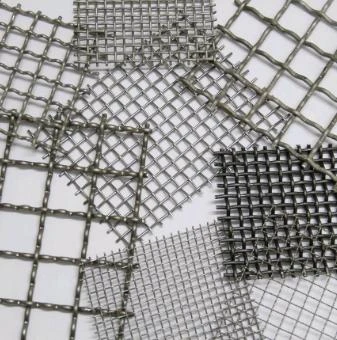 Wire mesh is durableWire mesh represents a cornerstone of modern industrial and agricultural solutions, offering unmatched versatility across countless applications.Read more >
Wire mesh is durableWire mesh represents a cornerstone of modern industrial and agricultural solutions, offering unmatched versatility across countless applications.Read more >Jul 11 2025
-
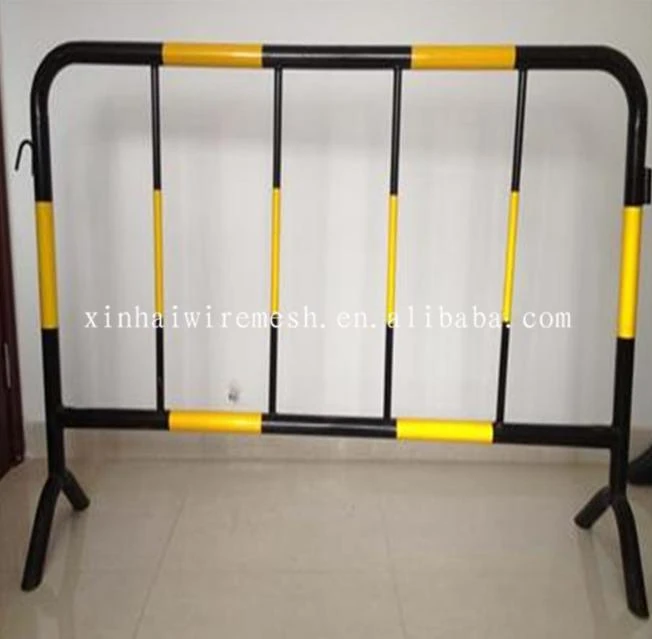 Safety barrier directs traffic flowIn high-risk environments, safety barrier systems stand as non-negotiable guardians against catastrophic incidents.Read more >
Safety barrier directs traffic flowIn high-risk environments, safety barrier systems stand as non-negotiable guardians against catastrophic incidents.Read more >Jul 11 2025
-
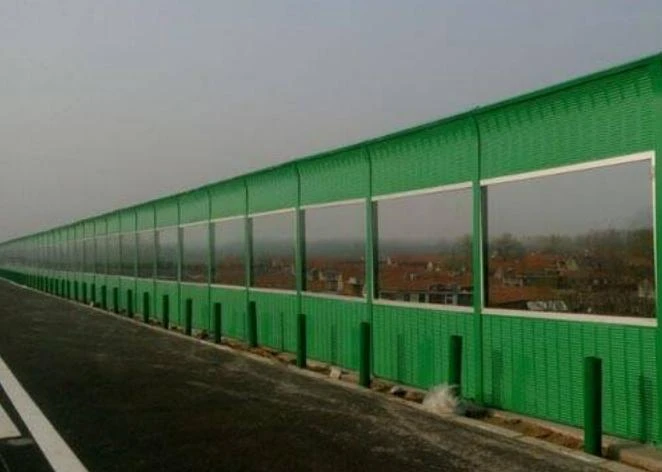 Modular Noise Barrier Eases InstallationUrbanization intensifies noise pollution, making noise barrier systems essential for preserving human health and tranquility.Read more >
Modular Noise Barrier Eases InstallationUrbanization intensifies noise pollution, making noise barrier systems essential for preserving human health and tranquility.Read more >Jul 11 2025
-
 Metal fence types enhance securityMetal fence types form the backbone of modern perimeter security solutions worldwide.Read more >
Metal fence types enhance securityMetal fence types form the backbone of modern perimeter security solutions worldwide.Read more >Jul 11 2025
-
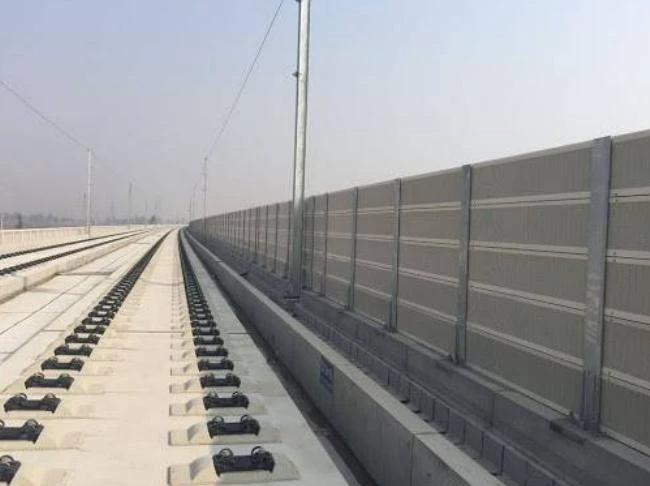 Crowd Control Barrier Manages Foot TrafficThe management of public gatherings demands precision, safety, and reliability, making crowd control barrier systems indispensable tools for organizers worldwide.Read more >
Crowd Control Barrier Manages Foot TrafficThe management of public gatherings demands precision, safety, and reliability, making crowd control barrier systems indispensable tools for organizers worldwide.Read more >Jul 11 2025
